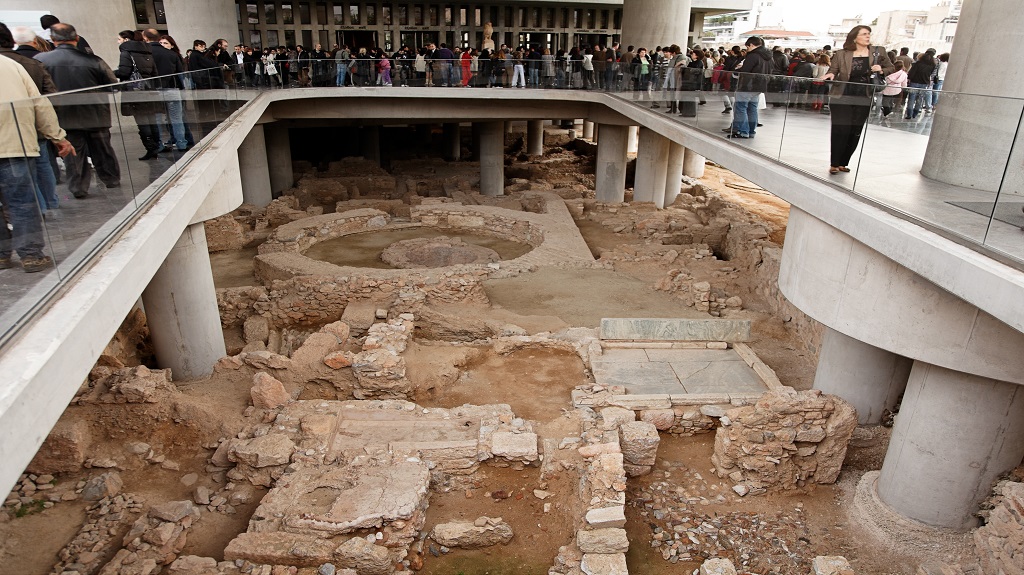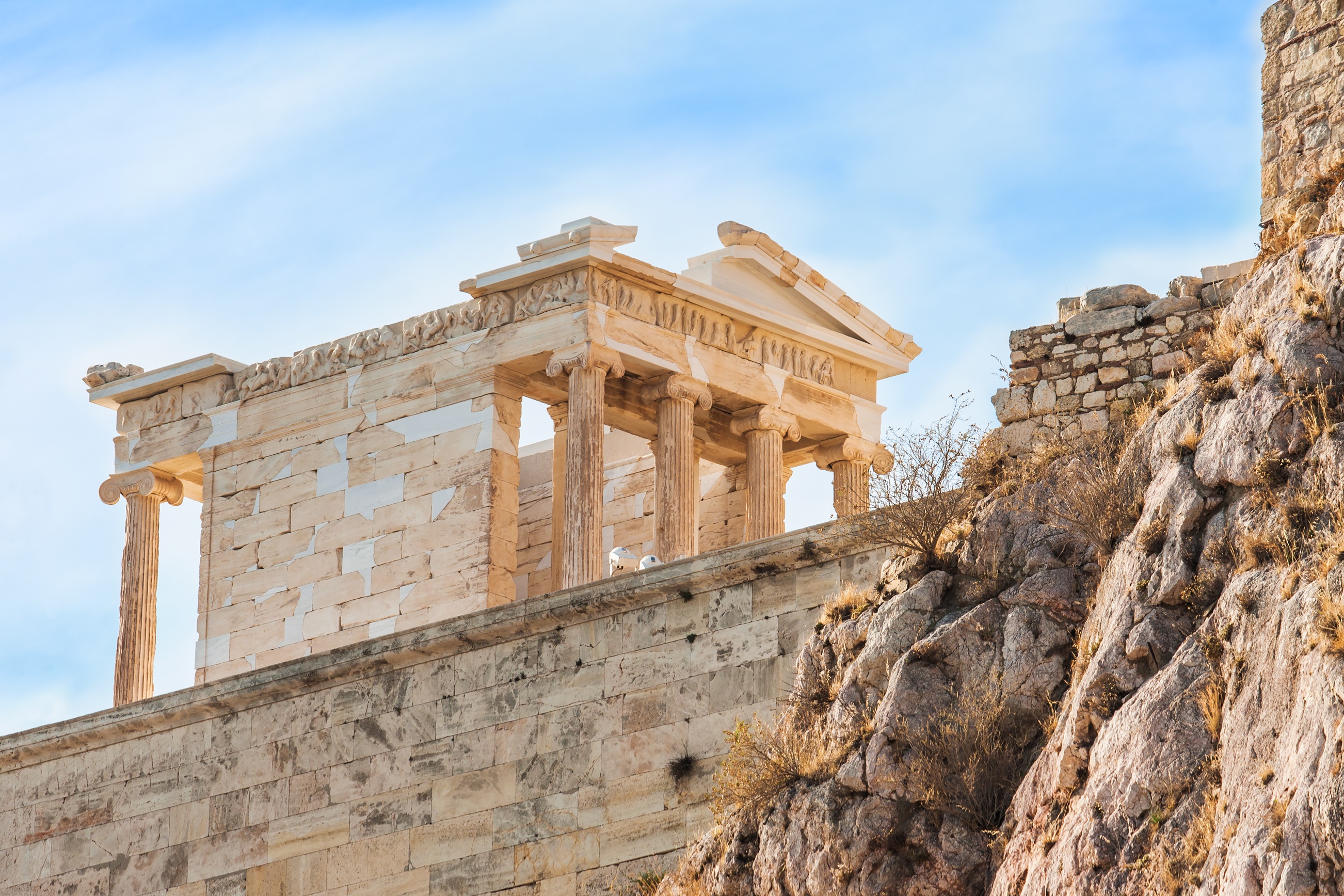Overview
Opened with much fortune in 2009, the modernist Acropolis Museum was designed by U.S. based architect, Bernard Tschumi, and Greek architect, Michael Photiadis. Next to the Louvre in Paris, we consider the Acropolis Museum to be the most interesting historical museum in all of Europe.
The museum, built on an old archaeological site, features modern architecture and wide-open space to house every artifact found on the Sacred Rock, where the Parthenon sits, and the surrounding area from the Greek Bronze Age to the Roman and Byzantine Greece. We believe you can spend hours (!) observing the hundreds of carvings that once lined the Parthenon, which has withstood all earthquakes, shelling, and plundering over the centuries — an astonishing feat! Visitors can peer through the glass doors into the ruins below or look up at the Acropolis.
Located just a five-minute drive from our favorite Athens luxury hotel, the Hotel Grande Bretagne, a visit to this excellent display of architecture and history makes for a perfect half day excursion in Athens to add to our Greece itinerary!

Architecture
Coming in at a total area of 25,000 sq. meters (269,098 sq. feet) and 14,000 sq. meters (150,695 sq. feet) of exhibition space, the Acropolis Museum offers visitors 10 times more than the old museum on the Hill of the Acropolis. Its modern design and clean, dramatic lines emphasize the Ancient Greek’s devotions to mathematical and scientific innovation. The meticulous attention to detail in their craft is emphasized by the fact that certain architectural refinements were implemented to make the temple appear more vast, grand, and perfect than it ever was.
The minimalistic interior and panoramic windows allow the focus of the guest to either be centered inwardly on the ancient sculptures and artifacts lining the table and walls or outwardly on the view of the captivating Acropolis below and the Parthenon atop the sacred rock above. Though it was significantly damaged during the 1687 siege by the Venetians during the Morean War, the Parthenon still stands tall and is truly a sight to behold. Our favorite architectural detail, if we had to pick, would be the fascinating display of the ancient Athenian neighborhood of Makrygianni revealing over 3,000 years of ancient life. Its 4,000 sq. meters (43,056 sq. feet) are visible through the Great Opening at the museum’s entrance and throughout the first floor, through the glass floor. Additionally, the giant Lego diorama representing various historical periods was a perfect educational display for all ages. The museum is built on pylons, strategically placed, to allow for minimal interference with the excavated remains and appears to be floating effortlessly.

The Temple of Athena Nike
This temple is petite but striking, keeping watch over all who enter the Acropolis gates! An Ionic temple, with four monolithic columns at the west and east fronts, this striking piece of architecture was dedicated to the Goddess who stood by Athens in times of war, Athena. Housed in the cella of the temple was a wooden cult statue of Athena, depicted with the symbol of war, a helmet, in one hand, and the symbol of peace, a branch of a pomegranate tree in the other. A protective parapet of Pentelic marble once bordered the sides of the bastion, 41.7 meters (136.8 feet) in length with relief-decorated slabs on the exterior.

The Parthenon Gallery Frieze
The Great Panathenaia, a festival that took place every four years to celebrate the goddess Athena, is carefully depicted by Pheidias on the Parthenon frieze. Consisting of 115 blocks, spanning 160 meters, the continuous sculpture features nearly 378 human figures, and more than 200 animals, mainly horses pulling chariots along. Of the entire frieze still surviving 50 meters are held within the Acropolis Museum, with the rest scattered across Europe.
Tours
The Acropolis Museum offers a rotating schedule of special exhibits in the arts including; music, visual art, science, and history. Every Friday night a guided tour of the museum is offered in Greek and English with a professional archeologist, including several stopping points for enriching discussion. A bonus of visiting the museum at night is the stunning view of the Parthenon lit up from the huge museum windows and balcony. The museum even offers activities and tours specifically designed for children, so families are definitely welcome!

